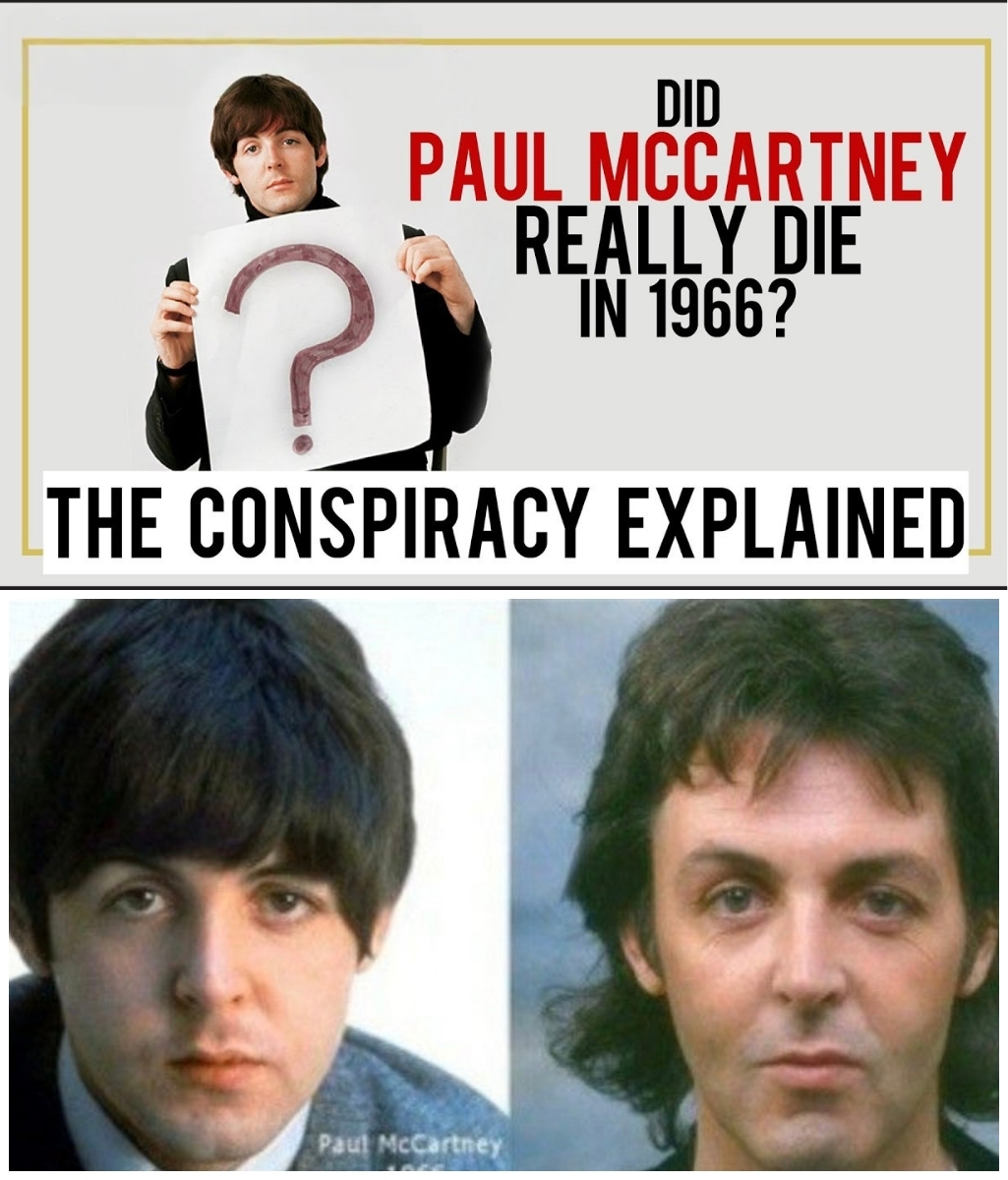
“Paul Is Dead” Clues Hidden in Beatles Album Covers and Lyrics Finally Decoded
It’s one of the most enduring conspiracy theories in music history — the idea that Paul McCartney died in 1966 and was secretly replaced by a lookalike. Dismissed by many as myth, the “Paul Is Dead” theory nonetheless gained traction because of the eerie clues fans began uncovering in Beatles album art and lyrics. Now, decades later, some of these cryptic messages are finally being reexamined and decoded — and the results are as chilling as ever.
A Strange Theory Gains Momentum
The theory first emerged in 1969 when a college newspaper published an article titled “Is Beatle Paul McCartney Dead?”It argued that Paul had died in a car crash in late 1966 and been replaced by a double named William Campbell — later dubbed “Billy Shears.” Though the Beatles never confirmed or even seriously addressed the rumor, fans began noticing strange symbolism in the band’s albums that seemed to point toward a hidden truth.
And that’s when the hunt for Paul Is Dead clues truly began.
Sgt. Pepper’s Lonely Hearts Club Band: A Funeral in Plain Sight?
The 1967 album Sgt. Pepper’s Lonely Hearts Club Band is often cited as ground zero for the theory. The cover art shows the band dressed in bright military uniforms, surrounded by what appears to be a funeral scene — complete with flowers arranged in the shape of a left-handed bass guitar, the instrument Paul famously played.
A doll on the right side holds a toy car, and nearby, there’s a hand above Paul’s head — a symbol often associated with death in some Eastern traditions. Most famously, Paul wears a patch on his left arm that reads “OPD” — which many took to mean “Officially Pronounced Dead.”
Magical Mystery Tour and the Walrus Clue
The lyrics in Magical Mystery Tour only added fuel to the fire. In the track “I Am the Walrus,” John Lennon sings “I am the walrus,” which seemed innocent until fans discovered that in certain Scandinavian cultures, a walrus symbolizes death. And on the cover of the Magical Mystery Tour album, Paul is — indeed — dressed as the walrus.
Coincidence? Or another breadcrumb in the growing mystery?
Abbey Road: The Iconic Funeral Procession
Of all the Paul Is Dead clues, none is more famous than the Abbey Road album cover. Released in 1969, the image shows the four Beatles crossing the street. But fans noticed something deeper: the scene resembled a funeral procession.
John, dressed in white, represents a preacher. Ringo, in black, is the undertaker. George, in denim, appears to be the gravedigger. And Paul? He walks out of step with the others, barefoot — a symbol of death in many cultures. He also holds a cigarette in his right hand, though Paul was left-handed. To many, this wasn’t just symbolic — it was confirmation.
To make matters stranger, the license plate on the white Volkswagen in the background reads “28IF” — interpreted by fans to mean Paul would have been 28 “if” he were alive at the time of the photo.
Backmasking and Cryptic Lyrics
The Beatles were known for their studio experimentation — and some fans believe they used backmasking (reversed audio) to hide messages in their songs. When “Revolution 9” is played backward, some claim it says, “Turn me on, dead man.” In “Strawberry Fields Forever,” listeners swear they can hear John muttering, “I buried Paul” — though Lennon later claimed he actually said, “Cranberry sauce.”
Still, the mystery only deepened as more fans pored over lyrics. In “A Day in the Life,” the line “He blew his mind out in a car” seemed like a direct reference to Paul’s alleged fatal crash. And in “She’s Leaving Home,” the lyric “Wednesday morning at five o’clock as the day begins” was interpreted as the exact time Paul had supposedly died.
The Beatles’ Silence — or Subtle Confession?
The Beatles never confirmed the theory, but they also never went out of their way to disprove it. In interviews, they dismissed it as “rubbish” or laughed it off. But some fans believe that the band, constrained by contracts or a desire to maintain their image, resorted to speaking in riddles.
Even years later, Paul himself occasionally jokes about the theory, once titling his live album Paul Is Live. But for those who still believe, these jokes only add to the intrigue. Was it mockery? Or a veiled nod to the secret?
The Mystery Lives On
Whether a carefully planted hoax or a fan-created fantasy run wild, the Paul Is Dead clues continue to fascinate music lovers and conspiracy theorists alike. These visual hints and lyrical riddles, embedded in some of the most iconic albums in rock history, have ensured the theory lives on — not just as speculation, but as part of the enduring mythology of The Beatles.
Because even if Paul McCartney never died in 1966… the mystery certainly refuses to.